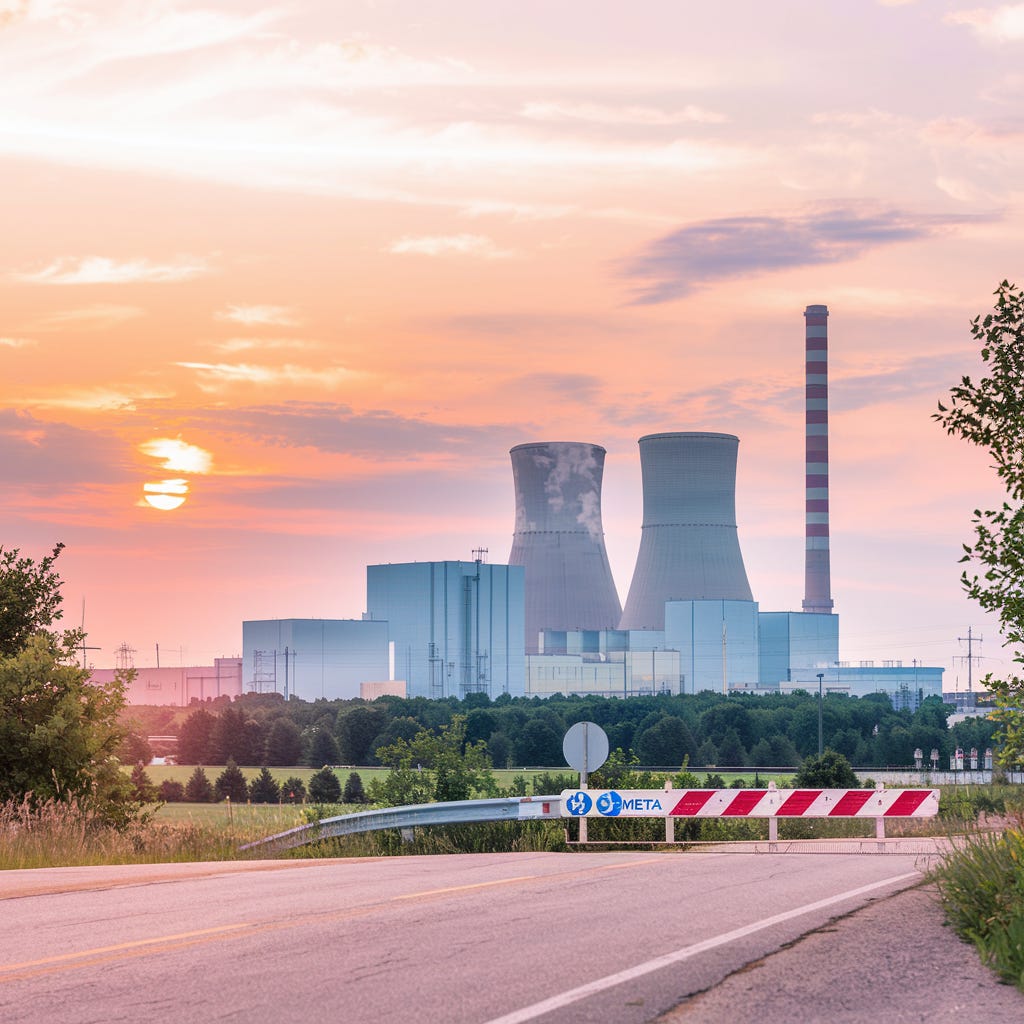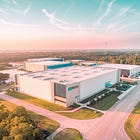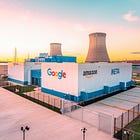Meta’s Nuclear Gambit: What It Means for the AI Infrastructure Power Struggle
Meta just locked in 1.1 GW of nuclear power for 20 years to fuel its AI infrastructure. This isn't about going green. It's about staying dominant in the most energy-hungry tech race of our time.
Welcome to Global Data Center Hub. Join 1200+ investors, operators, and innovators reading to stay ahead of the latest trends in the data center sector in developed and emerging markets globally.
In this article, you’ll learn:
Why Meta’s 20-year, 1.1 GW nuclear deal is a game-changer for AI infrastructure
How this single agreement redefines clean energy strategy for hyperscalers
What makes nuclear energy essential, not optional, for powering AI workloads
The specific risks Meta faces with licensing, grid bottlenecks, and execution
How this deal compares to Microsoft, Google, and Amazon’s nuclear strategies
Where digital infrastructure investors can find asymmetric opportunities next
Why controlling clean, firm power is now a strategic moat in the AI arms race
Meta’s 20-year, multi-billion-dollar nuclear deal with Constellation Energy is more than a clean energy win, it’s a redefinition of what it means to build AI infrastructure at scale.
By locking in 1.1 GW of baseload nuclear power from Illinois’ Clinton Clean Energy Center, Meta isn’t just buying electrons, it’s buying certainty. It’s buying uptime. And it’s buying a long-term edge in what may soon become the most power-constrained computing race of the century.
This deal anchors Meta’s broader shift from a renewable-first energy strategy to one that explicitly prioritizes firm, carbon-free capacity to meet the relentless demands of AI compute.
What Just Happened?
Meta signed a 20-year Power Purchase Agreement (PPA) with Constellation Energy, securing 100% of the output from the Clinton nuclear plant starting in June 2027.
Key details:
Capacity: 1.121 GW (with a planned 30 MW output increase)
Duration: 2027 to 2047
Structure: Replaces Illinois’ expiring Zero Emission Credit program
Energy Use: Clean energy credits, not direct power delivery
Impact: Enough to support nearly 800,000 homes or power thousands of high-density AI racks
This isn’t a pilot. This is full-scale industrial commitment. Meta is taking the entire output of a U.S. nuclear facility and directing it toward its AI and data center growth.
Why This Deal Matters
1. AI’s Energy Appetite Is Exploding
Meta is projected to deploy 1.3 million GPUs by the end of 2025, a nearly 4x increase from today. That kind of scale requires uninterrupted, scalable power.
With a single AI query consuming ~10x more power than a typical web search, and advanced training workloads consuming tens of megawatts, it’s no longer enough to just “go renewable.” Meta needs always-on power.
2. Renewables Can’t Shoulder This Alone
Despite having over 11.7 GW in contracted renewable energy, Meta faces a major mismatch:
Solar and wind are intermittent
AI infrastructure demands 24/7 power
Battery storage is expensive and not yet grid-scale for baseload needs
Nuclear power offers 90%+ capacity factor and pairs well with Meta’s existing clean energy goals.
3. The Economics Are Long-Term Defensive
The Clinton plant was at risk of closing without continued financial support. Meta’s PPA replaces state subsidies with market-based revenue, ensuring operational continuity.
This gives Meta:
Energy cost predictability
Grid reliability in key markets
Regulatory goodwill for helping sustain U.S. clean energy infrastructure
What Happens Next?
A. Meta’s Broader Energy Strategy
This is not a one-off. Meta is actively seeking 1–4 GW of new advanced nuclear capacity, issuing an open RFP across 20+ U.S. states.
It’s also piloting geothermal partnerships and deploying natural gas peaker plants in Louisiana to fill short-term gaps before Clinton goes live in 2027.
This dual-track strategy combines immediate stopgaps with long-term baseload stability.
B. Strategic Edge Against Rivals
While Google and Amazon are backing SMRs and geothermal, those technologies won’t come online until the 2030s. Microsoft is restarting the Three Mile Island facility for 2028.
Meta’s Clinton deal goes live in 2027, giving it a 2–5 year runway on competitors in terms of dedicated firm power.
It’s a first-mover advantage in the race to secure infrastructure before grid bottlenecks and permit delays take hold.
Risks on the Horizon
1. Regulatory Delays
Clinton’s license must be extended by the Nuclear Regulatory Commission before April 2027. If that doesn’t happen in time, the PPA risks missing its start date.
2. Grid Interconnection and Bottlenecks
Even with clean energy credits in hand, Meta’s data centers still need local power delivery. Transmission constraints are tightening across the U.S.
3. Partial Coverage
The Clinton deal addresses only 17–28% of Meta’s expected 4–6 GW needs by 2030. Meta still needs multiple GW of additional power and quickly.
Why This Deal Resets the Game
For Hyperscalers
Meta’s move proves that “clean firm power” is now table stakes, not a luxury, for building next-gen AI infrastructure. Every major hyperscaler will now need to secure similar long-term PPAs to avoid being left behind.
For Policymakers
This validates nuclear as a viable path to decarbonize the grid and support industrial-scale compute growth. Expect more public-private energy partnerships to follow.
For Investors
Nuclear operators like Constellation (CEG), advanced reactor developers like NuScale (SMR) and Oklo (OKLO), and uranium suppliers like Cameco (CCJ) all stand to benefit.
And so do data center REITs with access to long-duration clean power.
Final Thought
Meta’s nuclear partnership is not just a climate win. It’s a masterclass in long-term strategic positioning.
AI is becoming the most energy-intensive industrial activity on Earth.
Those who control the power will control the future of intelligence itself.
One More Thing
I publish daily on data center investing, AI infrastructure, and the trends reshaping global data center markets.
Join 1200+ investors, operators, and innovators getting fresh insights every day and upgrade anytime to unlock premium research trusted by leading investors and developers.




